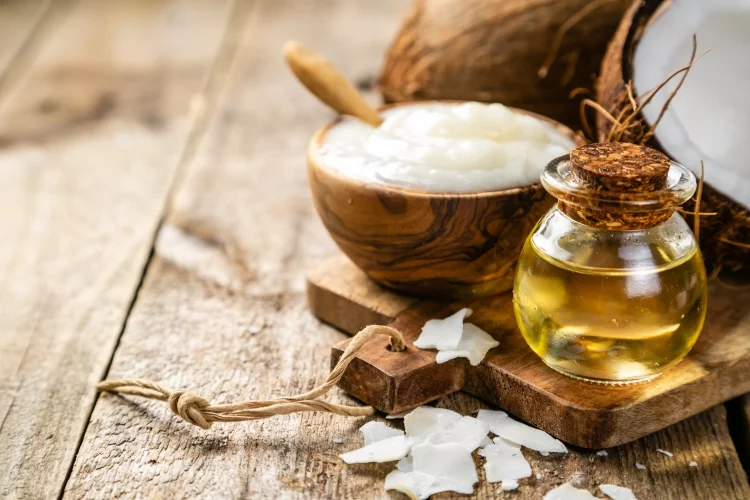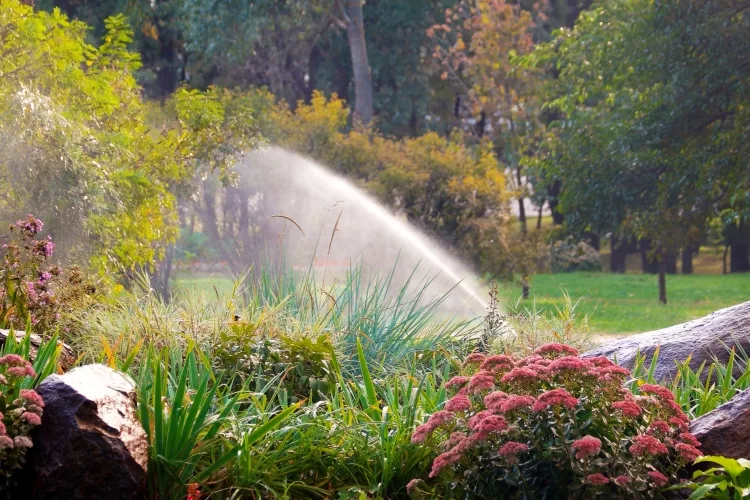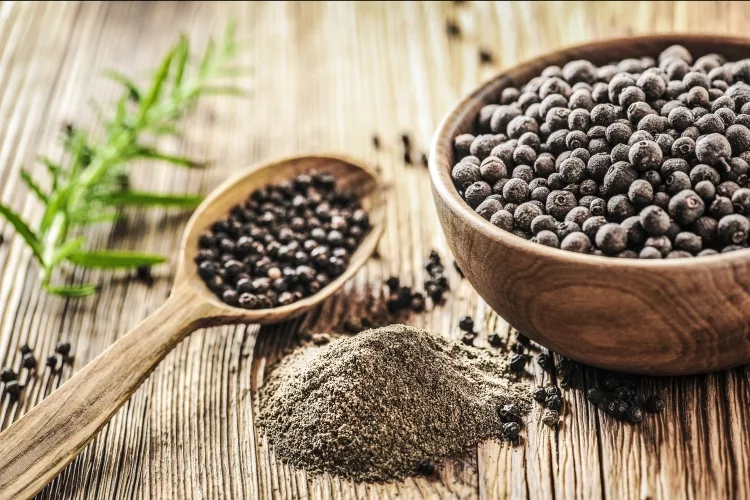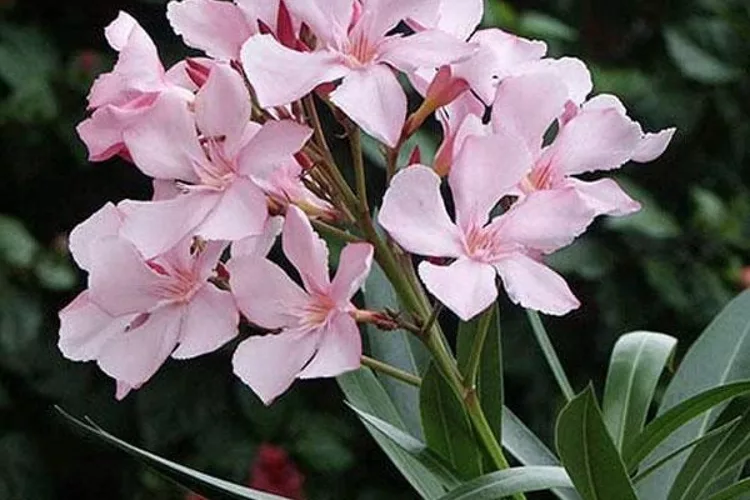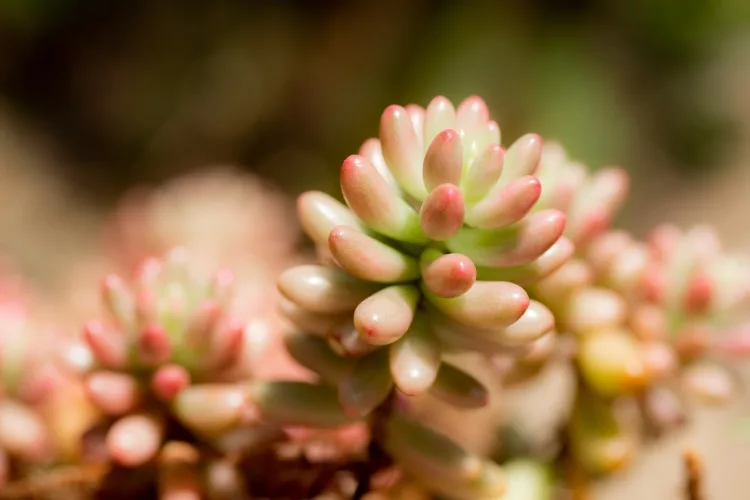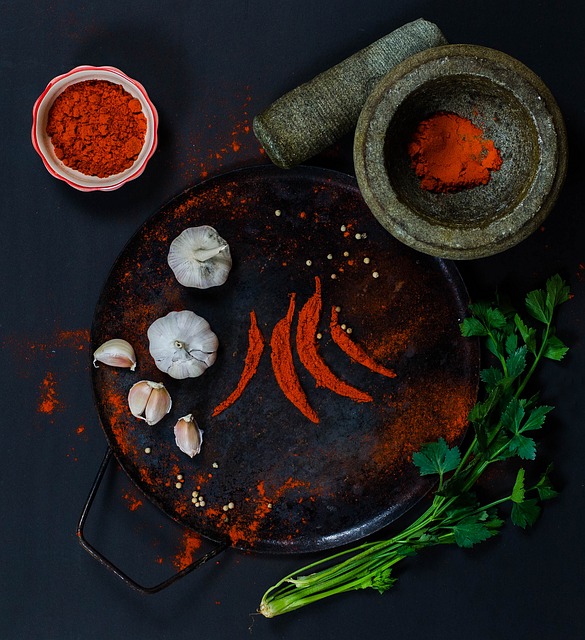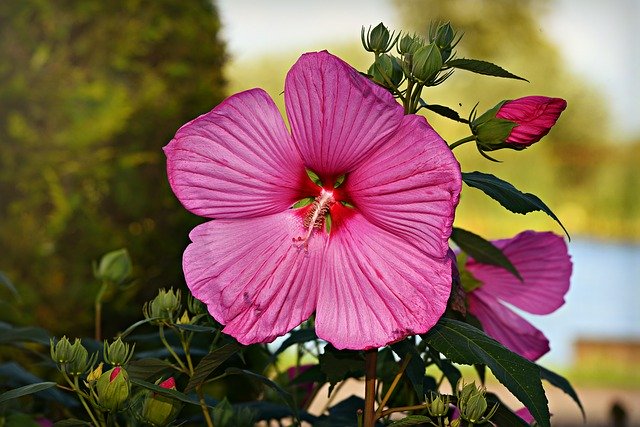The agave plant also referred to as the “century plant,” claims its origin in Mexico’s hot and arid suburbs. It was first put into use by the Mayan communities, who discovered its healing properties. Traditionally, agave plants heal open wounds, treat insect bites, treat certain skin disorders (e.g., inflammation, menstrual problems, etc.
Amid the 19th century, Agave’s worldwide exploitation began (due to the rise in demand for Agave tequila and the discovery of agave honey) – something that saw scientists committing hard to discover more recent varieties of the plant. Today, more than 200 known species of agave plants are useful for industrial or aesthetic purposes.
Below are some of the most common Agave species that grow around the world.
What is agave

While agave (pronounced ah-GAH-vay) is best recognized as the plant from which tequila is made, it has also been used for thousands of years as an ingredient in food. For example, the nectar made from the plant is known in Mexico as aguamiel, or “honey water.”
The Aztecs prized the agave as a gift from the gods and used the liquid from its core to flavor foods and drinks.
Due to increasing awareness of agave nectar’s many beneficial properties is becoming the preferred sweetener of health-conscious consumers, doctors, and natural food cooks alike.
Whether used for sweetening an iced tea or as a vegan alternative to honey, agave syrup(also known as agave nectar) is famous because of its extreme sweetness (about one and a half times as sweet as table sugar) and its thin consistency, making it very soluble. It is also associated with various health benefits.
Types of Agave Plants

Although there are more than 200 known species of Agave plants, below are the most common varieties. What are the science and scientific characteristics of these plants? There are some briefs and more details on jimbouton.com.
1. Foxtail Agave
Scientific name: Agave attenuata

This is one of a kind Agave plant variety that doesn’t produce spines. Instead, the array has a light, smooth, blue-green flexible foliage with rosettes of growth approximately 5-10 ft. tall and wide.
This agave plant variety derives its name from the fascinating arching flower stalks that protrude from the rosette amid summer. The flower stalk reaches up to 5 ft. to 10 ft. before bending back to the ground like a foxtail.
The variety produces green-yellowish flowers at maturity, paving the way for seed pods and new plantlets. Just like the case with other Agave plant varieties, Foxtail Agave dies off when blooming begins. The offsets/suckers at the base remain as new Foxtail Agave plants.
The agave plant impresses due to its ability to do well in poor soil conditions. It may require some shading amid winter (too much sunlight may not be suitable for this variety)
2. Blue Agave
scientific name: Agave tequilana

This agave plant is considered the most crucial agave variety, thanks to its high concentrations. In addition, it is used in the preparation of alcoholic drinks such as tequila.
Although the agave variety can survive in coastal regions, it does well in Mexico’s high altitude regions (4,500 Ft.) with sandy soils.
It produces stalk at its center when it’s approximately five years old. It’s this stalk that produces yellow flowers after a period of, say, 10 -20 years. Usually, the agave plant would die if the branch is left to make flowers; however, this is avoided by cutting off the stalk before blooming.
3. American Century Agave
Scientific Name: Agave americana

The agave century plants are known for their spiky tips that can pierce your skin profoundly if not appropriately handled. The plant was once thought to live or bloom after 100 years (and hence its name); however, it was later discovered that it only takes between 10 and 25 years before blooming.
Like other organic agave varieties discussed on this list, the agave produces a flowering stalk at its center that can go as high as 5M tall.
It produces many offsets/suckers at the base, which continue to grow even after the parent agave dies off after blooming.
The agave has been found to do well dry, sandy soil with good drainage.
4. Caribbean Agave
Scientific Name: Agave angustifolia

This monocarpic Agave plant blooms only once after some time, usually not less than ten years. The plants feature green leaves with a spiny creamy-white margin that can pose a significant threat to your kids and pets. Note that the leaf color and structure can vary from one plant to the other.
It does well in unfavorable desert climates as it grows amid summer and goes dormant amid winter.
If you are growing this plant in your home, avoid watering regularly (especially amid the dormant seasons), as this may cause its root to rot. Likewise, remember to cut off the protruding flower stalk at its center – this will increase its lifespan.
5. Octopus Agave
Scientific Name: Agave vilmoriniana

This Agave plant stands out amongst the rest as it lacks the “piercing spines” familiar with other Agave varieties. Instead, it has a solitary rosette of succulent green leaves that bend back to the ground – making it mimic an octopus shape.
The Agave never grows pasts 4 Ft. above the ground and has an equal diameter. Its leaves grow up to 90 cm long and 10 cm wide.
The Agave produces yellow-whitish flowers at the top of a 15 Ft. tall flower stalk at maturity. The agave life ends after flowering; however, suckers continue growing.
The plants do well in sandy, dry soils and in regions receiving ‘enough’ direct sunlight. Its disease resists and won’t require any spraying (if homegrown).
6. Mountain Agave
Scientific Name: Agave montana

As the name suggests, this agave plant does well in high-altitude regions above 9,000 Ft. The agave was not easy to discover due to the high altitude. It’s known for its ability to survive in cool, moist climates that may not favor other agave varieties. It requires well-drained soil in direct sunlight and water sparingly.
If you grow this agave in your home, experts advise you not to do such near walkways/pathways to injure your kids and pets with its sharp spikes.
The plant is fantastic as it can do well in all weather conditions – it will readily grow in poor soils and resist drought, heat, and cold. In addition, you can grow it in your home for decorative purposes.
7. Whale’s Tongue Agave
Scientific Name: Agave ovatifolia

This agave is known for its rounded rosette of broad gray-blue leaves. It grows up to 1.5 m high (5 Ft.) and 1.8 m wide (6 Ft.). Like some other Agave plants on this list, the leaves feature sharp spikes that can easily tear your skin if handled recklessly.
The terminal spine grows up to 4.2 m long and produces greenish-yellow flowers at maturity.
If you are growing this Agave in your home, make sure to place it in well-lit places, e.g., sunny windows.
Note that the plant can grow taller than your greenhouse, so it’s good to grow it outside or on a pot on your balcony.
8. Thread-Leaf Agave
Scientific Name: Agave filifera

This is one of the most eye-catching agave plants, thanks to its stemless rosette that grows up to 90 cm long and 60 cm tall.
The agave is monocarpic -meaning it produces flowers only once in its entire life. Therefore, this agave’s blooming season may slightly differ from other varieties as it blooms in winter or spring. It also grows a bit slowly compared to some other species.
For those growing these agave plants at home, it’s worth noting that agave pups require minimum disturbances. Avoid chopping off the leaves as this could alter their growth!
9. Shaw’s Agave
Scientific Name: Agave shawii

This agave blooms at the age of, say, 20 to 30 years, after which the parent plant dies, leaving suckers to grow. The flowering season for the agave is between Feb to May. At maturity, the agave is 3 Ft. tall and 2 Ft. wide. You will like it that the agave can survive poor soil and weather conditions.
It attracts wildlife such as hummingbirds amid the flowering season, which adds magnificent views to the surroundings. In addition, it’s disease-resistant and won’t cost anything if you wish to grow it at your home.
Note that, unlike other agave species, summer watering is not necessary with this particular type of agave plant.
10. Twin-Flowered Agave
Scientific name: Agave geminiflora

This is a scarce variety of Agave plants that’s not easy to find elsewhere other than Mexico. The plant grows well on rocky grounds that are extremely dry. This makes growing the plant at home somewhat difficult (although you can still grow it if you can provide the needed growing conditions).
It produces flower stalks that protrude as high as 15 Ft. – meaning you will need extra growing space (you can’t grow it in your greenhouse unless it’s tall). However, you will like that this plant requires minimum care.
For more information, click: Guide to Growing Agave Geminiflora.
11. Queen Victoria agave
Scientific Name: Agave victoria-reginae

This agave variety differs from other types because it has black-tipped leaves that curve inward, forming a compact dome. It matures at 20 – 30 years, after which it produces the flower stalk.
The flowers usually produce reddish-purple or cream-colored, and they protrude as high as 15 Ft.
Similar to other agave plant species on this list, the agave requires minor and minimum disturbances. You can grow it in a container or a pot in your home.
12. Agave Parry
Scientific Name: Artichoke agave

This agave is standout thanks to its gorgeous blue-gray leaves. In addition, these leaves feature sharp spines along their ridges. Contrary to some other agave varieties, this one has a dark, sharp spike at the tip of each leaf. This can tear your skin, so be careful when dealing with this agave.
It achieves maturity at the age of 15 -30 years – after which it produces flowers. The flowering seasons are usually amid summer. The flowers produced are bright yellow. Note that the plant dies off after flowering; however, you can prevent this by cutting off the flower stalk at its early stage.
13. Butterfly Agave
Scientific Name: Agave potatorum

This agave is called butterfly agave not by coincidence but because its wings resemble those of a butterfly. It’s a slow-growing agave plant that is a good choice for a potted plant.
The agave is not hard to maintain as it requires minimum care. There is no regular watering needed and no shades necessary – the plant can withstand even the most scorching sunlight.
For more information, click Agave Potatorum: Facts.
14. Black-Spined Agave
Scientific Name: Agave macrocantha

This agave has purplish-green color and has no distinct scent. Therefore, they are usually minor compared to some other agaves to occupy much of your space.
However, they have sharp terminals that should handle with care to avoid being hurt. They require little to no watering and prefer to grow in regions receiving direct sunlight.
15. Quadricolor Century Plant
Scientific Name: Agave lophantha

This agave is supposedly the most eye-catching, thanks to its pale green mid-stripe and yellow stripes. These blend well with its dark-green leaves featuring reddish edges lining the spikes.
The plant grows slowly to achieve maturity at 20 – 30 years when the flower stalk protrudes.
You can grow this agave in your home if you are looking to beautify your home. Unlike the regular flowers you are used to growing, this will save you much time as it requires no watering. You will, however, have to care about your pets and kids as they can get hurt by its sharp spikes.
16. Smooth Agave
Scientific Name: Desmettiana variegata

If you are looking to grow the most attractive agave plants in a pot, you’ve got Agave potatorum is the best pick. The agave looks appealing with its dark-blue or yellow-green leaves held in a gorgeous, tight, oval rosette.
Note that this agave may need shading (especially when transplanting). However, it will do well in regions with moderate sunlight and some shading. Although the plant is drought resistant, you can water sparingly amid summer.
17. Ferocious Agave
Scientific Name: Salmiana ferox

This agave is said to be incredibly rigid and flexible. Its leaves are thick and stiff, with sharp lateral spines that can pierce hard if mishandled. It looks lovely in a large pot. However, you should avoid growing it closer to walkways as it can easily injure your kids and pets.
This agave type can grow up to 4m high and 3m wide. It also produces a long flower stalk, up to 9 Ft. tall, making sure you have enough space.
18. Cow Horn Agave
Scientific Name: Agave bovicornuta

This agave plant is an impressive choice to put on your pot if you wish to add a greenish appeal to your compound. Its beautiful succulent forms an open-solitary rosette that extends up to, say, 76 cm (30 inches) long and approximately 16.5 cm wide.
The leaves are green-yellow with blades that are armed with dark brown sharp spines.
The plant mature at 12 years of age – after which it produces a long flower stalk (7 m tall). The plant dies after delivering yellow-green flowers.
19. Agave Corolata
Scientific Name: Mescal ceniza

Found in Coastal Northwestern Mexico, Agave Corolata is arguably the best agave plant for buddies who don’t have a spacious room to grow wide agave varieties. It grows cute and manageable and has beautiful silver-blue leaves that will add aesthetic appeal to your home.
It takes up to 15 years for this plant to attain maturity. At this age, the agave will produce a spectacular stalk that shoots up to 10 Ft. tall.
The agave isn’t to be grown in your walkways as it can pierce your kids or pets with its sharp dark-brown spines.
20. Kings of Agave
Scientific Name: Agave nickelsiae

This agave thrives better in well-drained soils. In addition, it’s disease-resistant and requires minimum care; hence an excellent choice to grow in containers.
Better yet, the plant is an excellent choice to grown close to your walkways as it doesn’t feature sharp spikes.
Require little to no watering; hence suitable for a hot climate.
It’s advisable to transfer the agave plant to your greenhouse during winter because too much water can cause its roots to rot.
21. Narrow Leaf Century Agave
Scientific Name: Agave Striata

This is an evergreen agave plant with gray-green leaves that radiates from the center of the rosette. The leaves curve upwards and have sharp spikes at the tip. The variety matures at approximately ten years – after which it sends a spectacular flowering stalk into the air.
The flowers produced are pale-yellow and are known to attract birds such as hummingbirds.
This variety will wow you as it’s disease-free and requires little to no care.
For more information, read: Growing the Agave Striata.
22. Agave Salmiana (Also Referred to as “Green Maguey)
Scientific Name: maguey pulquero

This agave species is native to southern and central Mexico. It’s easily recognizable by its thick, dark-green, and well-armed leaves that bend down at the tip.
Although the species prefers growing in rocky regions with well-drained soils, it can be grown in containers for ornamental purposes. However, it should not be grown near your walkways as it can pierce your kids or pet painfully with its sharp spikes.
Research has revealed that this Salmiana agave mature after 15 to 25 years. At this age, you can watch for its long (approximately 13 Ft.) flowering stock that bears greenish-yellow flowers at the tip. These flowers attract birds (such as hummingbirds) and insects (such as bees).
For more details, click here: Facts About Agave salmiana.
23. Agave Stricta (Also Called Hedgehog Century Plant or Hedgehog Agave)
Scientific Name: Agave stricta Salm-Dyck

This agave claims its origin in the arid and semi-arid suburbs of Mexico. It’s one of the best agave species to grow on your patio. It’s evergreen and hence adds a “greenery” appeal to your home.
Unlike most other agave species, this one does grow tall. However, it only achieves a maximum height of up to 20 inches, making it an excellent choice to grow indoors.
It would be best to handle this agave species with utmost care as it can pierce your skin painfully with its sharp spikes at the leaf tips.
For it to do well, water sparingly and keep indoors amid winter seasons. This will help to prevent its roots from rotting.
For more details, click here: How To Grow Agave Stricta
Edible Agave Parts
Agave Flowers

Agave flowers are readily edible when boiled or steamed. For example, they can be added to fried, scrambled, or battered eggs. However, chef de cuisines advise you to eliminate pollen stems before boiling or steaming the agave flowers (as they tend to have a bitter flavor).
Agave flower nectars are good for making sugar or sauces, which, when bottled, can have a shelf life of up to 2 years.
Agave Leaves

Just like agave flowers, agave leaves are readily edible when roasted or boiled. You will like them for their caramel-like natural flavor.
Basal Rosette
This part of the agave plant resembles a green pineapple. To consume Agave brunch, chop off the stalk and leaves and roast it. You will love the taste whether you serve hot or cold meals.
Sap
The sap of agave is sweet with a slightly bitter taste. You can drink it raw or boiled syrup.
You can also read Agave Nectar Drink Recipes.
Agave Fruits

Although it’s rare to find agave fruits, agave flowers pollinate naturally (if any) from fruits. The fruits consist of medium-sized white seeds. In some cases, you will also discover small proportions or black agave seeds. The fruits are not edible, and they contain seeds that can germinate readily within 1 to 2 weeks.
Agave Nectar/Agave Syrup

Agave nectar, also referred to as Agave syrup, is a brown liquid sweetener derived from agave plants native to Mexico’s volcanic soils. Nectar is an excellent alternative to table sugar, thanks to its wide range of benefits. One of the things that make it better than any other agave nectar substitute is its low GI. As a result, it does not interfere with the body’s sugar levels.
The sweetener is said to be 1.5 times sweeter than any other regular substitute for agave. This means a small amount will go a long way hence saving you more.
There are two types of agave nectars, and you should be able to differentiate between them. If you can’t consider the following
Light Agave Nectar

Light agave nectar is a sweetener that has undergone multiples of processing. The processing steps typically involve filtration and heating. The final product is considered less in nutritional content as most of them are removed amid the processing steps. Due to the processing steps, the final sweetener produced has a more neutral taste and may not retain the original smell.
Raw Agave Nectar

Unlike the light Agave nectar that must undergo multiple processing cycles, raw agave nectar is sold directly to the consumer. The raw agave syrup does not pass through the various processing steps, which means all the agave nectar nutrients are retained. As a result, it’s rich in vitamins and other nutrients that prove to be very useful when consumed.
Such nutrients, vitamins, and minerals are not present in light agave nectar. Lovers of raw Agave syrup argue that processed agave may contain some additives which are not healthy if consumed. They, however, appreciate the Agave for the low glycemic index.
Agave Nectar Nutrients

Agave syrup is said to be rich in starch, calories, and sugar. It features approximately 60 calories or 21 calories per tablespoon or teaspoon, respectively. 85% of agave syrup is fructose, and the rest is glucose. The fructose in agave syrup (unlike the fructose in natural fruits) lacks proteins, fiber, minerals, and vitamins. Therefore, it has a low glycemic index implying zero impact on your blood sugar levels.
Agave Sweetener

As aforementioned in this post, Agave sweetener, also referred to as Agave syrup or Agave nectar, is one of the most favored food/beverage sweeteners. As a result, its demand has been on the rise in the recent past, especially among individuals who have diabetes.
The sweetener has commanded attention due to its low glycemic index. However, compared to some other sweeteners, the rate of agave syrup absorption into the bloodstream is a bit slow. This is important as it ensures the sweetener doesn’t lead to a spontaneous spike in insulin.
You may have encountered various individuals wondering whether agave sweetener is better than regular table sugar. The straightforward answer would be YES. For one, agave is less in glucose content and low GI score, meaning less impact on your blood sugar levels. Secondly, it’s 1.5 times sweeter than your regular table sugar. You will thus need a small amount to sweeten your foods and beverages. In the long run, this translates to good value for the money!
You are encouraged to switch to Agave sweetener if you struggle with health conditions such as heart diseases, obesity, and diabetes.
Agave Sweet Powder

The Agave drink is dried into granular form by removing all the liquid. The product obtained is then crushed into sweet agave powder. The powder has no notable difference from the juice agave form. It’s loved for its high solubility in both hot and cold drinks.
Agave Plant Care

Just like other plants, the agave plant requires some care. If you are growing this plant, make sure you observe the following.
Water
As you probably know, all desert plants don’t require excessive moisture, and agave plants aren’t an exception. The plant will do well with moderate watering. Experts advise you not to water your organic homegrown agave plants more than two times weekly. Likewise, don’t water the plants more than 1 to 2 times amid the cold seasons. Watering sparingly is recommendable as it gives the soil enough time to dry out.
Note: Never bother watering your agave plants amid the rainy seasons!
Light
If you are growing agave and want your plants to do well, make sure you choose well-lit regions. Since the plants do well in receiving direct sunlight, it’s advisable to place them in the southeast (or south) balcony/ window.
Being a desert-growing plant, agave can tolerate the most scorching sun, meaning you will not need shading. The only time you will need some shading is when transferring your agave plants from low-light regions to places with direct sunlight. You will want to offer some shading before your agave plant can get used to direct sunlight.
Blue Agave Tequila

This plant grows naturally in the dry, sandy soils of Mexico and makes natural agave sweeteners.
Blue Agave tequila Uses
Blue Agave tequila is beneficial in many ways. Some of these include:
Blue Agave tequila As a Disinfectant & Cleaning Agent
Can use Blue Agave tequila for all your cleaning purposes. Similar to your at-home rubbing alcohol, 100% Agave tequila kills germs. It’s suitable for use as a disinfectant when the concentration ranges from 50% to 80%. Higher concentration means better disinfectant.
Boosting Bone Health
Drinking regulated quantities of tequila can help to strengthen your bones. In addition, several independent studies have revealed that the tequila plant contains agave tequilana, which improves the intake of magnesium, calcium, and other beneficial minerals. All these work together to boost your bone’s health.
Blue Agave Tequila Aids Digestion
Some experts have debated that taking a small quantity of tequila before your meals and after the meal is good to boost your digestion. This is because a small amount before the meal triggers your appetite and metabolism, while a regulated quantity after the dinner soothes and assists digestion.
Lab reports have shown that tequila is rich in insulin. This induces better digestion in the body by nourishing good bacteria.
Control Blood Sugar Levels & Aids in Weight Loss
Going to the American Chemical Society’s recent report, blue Agave tequila helps balance your blood sugar levels. Studies have shown that blue Agave tequila contains a particular type of sugar known as agavins. It’s this content that’s responsible for lowering blood sugar.
This tequila constituent (agavins) will also make you feel fuller and cause you to eat less. This goes a long way to promoting weight loss.
It Curbs Insomnia
Regardless of what’s causing you to lack enough sleep, drinking regulated blue Agave tequila quantities can aid sleep. This is true because it has been found that tequila calms your nerves, relaxes your body and mind, thus helping better sleep.
Numbs Pain
If you are suffering from body pains, take a little tequila. This advice from experts found that small quantities of tequila help dilate our blood vessels, thus facilitating blood circulation to all body parts. This goes a long way to lessening body pains.
Most Beautiful Agave: Queen Victoria Agave

This is said to be the most beautiful variety of Agave trees. It can add a sense of comfort in your living room and an extra appeal to your Agave farms or balcony. Some people claim there is no other “eye-catcher” plant than Queen Victoria Agave. It has a long lifespan of up to 30 years and hence an excellent choice to choose if you are looking for long-lasting beauty plants that can substitute regular flowers and greenify your home.
The good thing with this sweet agave plant is that you can either grow it indoors or outdoors – as deem fit to you!
How to Make Agave Nectar?

Agave Syrup is made when the Blue Agave plants’ leaves are cut off at around 7 – 10 years, leaving the plant’s core exposed. The core is often described as a vast pineapple, weighing between 50 to 150lbs, depending on how old the plant is.
When the plant’s core is exposed and ready to work on, all of the sap inside the core is extracted, filtered, and heated up. Heating the fluid breaks down the carbohydrates in the chemical bonds and turns them into sugars. The sap is heated at quite a low temperature, enough to give it a sweet taste but not enough to cook it.
When the agave has grown to 7-10 years old, the plant’s leaves are cut off, revealing its core (called the “pina”).
To make the agave nectar, the sap is extracted from the pina, filtered, and heated at a low temperature, which breaks down the carbohydrates into sugars. Lighter and darker varieties of agave nectar are made from the same plants. Because of the low temperatures used in processing many types (under 118°F), raw food enthusiasts generally regard agave nectar as raw food.
What Does Agave Nectar Taste Like?

The taste of agave nectar is comparable, though not identical, to honey. Many people who do not like the taste of honey find agave a more palatable choice. It also has none of the bitter aftertaste associated with artificial sweeteners.
Though some purveyors offer a half dozen agave nectar varieties based on different plant varieties and varied preparation methods, most brands offer two types: light and dark. The lighter syrups undergo less heating and a more thorough filtration to produce a more mildly flavored product that is neutral enough to be used in many culinary applications. The darker syrups are filtered more minor, and the solids left in the syrup make for more potent nectar with a flavor sometimes compared to maple syrup.
Why is Agave Nectar Know as a Natural Sweetener?

Agave is considered one of the best natural sweeteners. It is quickly gaining popularity among health-conscious individuals owing to its low glycemic index. Agave is primarily fructose, and because of its quiet glycemic index property, individuals who have diabetes may add it to their diet in moderation.
The agave syrup is composed of oligo-organic compounds that promote the gall bladder’s proper functioning, supporting fats’ saponification. These oligo-organic compounds also do wonders in combating significant arteries and veins’ blockage because of increased cholesterol levels. In addition, it improves flavors, keeping the excellent taste for a longer duration.
How to Use Agave in Cooking

When using agave for cooking, you may simply combine it with any cold or warm beverage or make it an alternative to honey or sugar in many baking recipes.
Blue agave is highly soluble and easily dissolves even when used in cold beverages such as iced teas or lemonade. It also functions very well as to 1 to 1 substitution in each recipe that calls for honey. When using agave in preparing baked goods that need sugar, such as cookies and cakes, always keep in mind that agave is syrup and not a dry sweetener.
You may adjust to that by making use of lesser liquid in the recipe. Moreover, you should also consider the extra sweetness of the syrup. You may only need about 1/3 to ½ cup of agave as a substitute for a cup of sugar.
Note that switching to agave syrup isn’t just an excellent idea for those with the diseases mentioned above—it’s ideal for those who wish to adopt a healthier lifestyle. Sweeteners containing the juice, syrup, or nectar of the super plant can be found on the shelves of grocery stores and supermarkets. However, if you wish to have a more convenient shopping experience, you won’t have difficulty finding similar products on the web.
Do take note that scammers abound online, so you must take the time to research the most trusted agave sweeteners before making a decision. Also, refrain from giving out sensitive credit details unless you’re 100% sure that you’re dealing with a credible source. Rest assured that whatever means you choose to acquire it, the agave nectar is good for you.
Agave Nectar vs. Sugar

You have been using table sugar and now want to switch to nectar. But before you can do that, you’d like to know how the two compares so that you make an informed decision. If this is all you need, well, see our comparison below.
Source
As aforementioned, agave nectar is extracted from the agave plant native to Mexico. On the other hand, table sugar obtains from either sugar beets or sugarcane. Although the two are marketed as “natural,” they undergo various processing steps that may lower their associated health benefits.
Glycemic Index
Compared to sugar, the best agave syrup has a much lower glycemic index. Glycemic index refers to a value used in measuring the quantity of specific food that’s just enough to alter blood sugar level. For example, the glycemic index of agave syrup ranges between 10 – 19, while sugar is more than 50.
Nutritional Fact
Although both are marketed as natural, Agave nectar is considered to be healthier than table sugar. This is because the former has fewer calories per 100mg than the latter. On top of that, agave nectar has less sugar content and contains other beneficial compounds such as magnesium, sodium, and potassium. Therefore, it can consider as an excellent alternative to using in place of table sugar.
Agave vs. Honey

When looking for the best sweetener, it’s common to get confused, especially when choosing between honey and agave. So how do you know what’s right for you and why? Consider our head-to-head comparison before making any decision.
Sources
Both agave and honey are natural sweeteners that come from two various sources. Agave extracts from the blue agave plant, while honey bees make honey. Compared to honey, agave nectar has a more neutral flavor.
On the same note, agave must undergo multiple processing steps. This is unlike that it is ready for consumption even when unprocessed.
Calories
Lab reports have shown that both honey and agave have almost equal proportions of calories. A tablespoon of each will contain approximately 64 calories.
Sugar Content
The main sugars in honey and agave nectar are fructose and glucose, with few other sugars. Honey contains up to 30 glucose content and up to 40% glucose content. On the other hand, agave has approximately 75% -90% fructose content. The high fructose content may not be so healthy in your body, so use this product cautiously.
Remedial Properties
Both honey and agave nectar offers you a wide range of health benefits. Other than being used as natural sweeteners, they can use them for medicinal purposes. For instance, can use agave to dress open wounds when used together with salt. On the other hand, honey features phytochemicals that act as antioxidants to eliminate free radicals in your body. Such free radicals can cause tumors.
Agave Vs. Aloe Vera

If you are not a keen observer, it can be easy to confuse Aloe Vera and Agave. The two are different species. However, they almost look alike (especially if you consider their shapes and sizes). Below is a one on one comparison between agave vs. aloe.
Aloe Vera vs. Agave: Notable Differences
Size Differences
One of the things that set aloe and agave apart is their sizes. When comparing the two plants, you will notice that agave is larger than Aloe Vera at maturity. Their size difference is apparent, especially amid blooming – some agave plants produce flower stalks up to approximately 40 ft. tall.
Although some specific varieties of Aloe Vera can grow quite tall and large (for example, Tree Aloe), agave plants tend to be larger than the various types of Aloe Vera.
Leaf Differences
Aloe Vera is known for its thick, fleshy leaves. The leaves are softer with a spongy texture and are filled with an almost clear gel. On the other hand, Agave leaves are known to be thinner and somewhat fibrous.
If you want a much easier way to differentiate between Agave and Aloe leaves, try breaking them off. An Aloe Vera leaf will readily break and produce some gel. On the contrary, an agave leaf won’t break off easily – you may have to use shears to break the leaf!
Better yet, you can check the spines along the leaf margin and tell whether it’s an Aloe or Agave leaf. In this case, Aloe plant spines are noticeable but are a bit soft – you can even run your finger/hand down the edge without too much discomfort. Of course, you can expect the spines to poke your fingers, but be certain you won’t hurt.
In the case of Agave leaves, the spins are sharp and can even tear your skin quickly. Therefore, we advise you to touch the Agave leaves gently.
Flowering Habit
Whereas both Aloe Vera and Agave flowers appear almost alike, they show some significant differences in how they bloom and the effect of blooming. In both plants, flowers produce by long stalks that protrude from the “center” (of each plant). Different varieties of these plants will have stalks of varied length; however, the flowers produced at the end of these stalks will be yellow, red, or orange.
Unlike Agave, Aloe Vera plants bloom repeatedly (i.e., they are polycarpic) – they will produce bell-shaped or tubular flowers yearly. Therefore, the blooming season for Aloe Vera can be anywhere between December – May.
On the contrary, Agave plants don’t bloom yearly (i.e., they are monocarpic) – they are known to bloom only once in their entire life, after which the plant dies. An agave plant will bloom anywhere between 10 – 30 years. As you can see, the frequency of blooming differs. As a result, you are much likely to witness Aloe Vera plants in bloom than agave plants.
Note: Agave plants begin to die as soon as pollination takes place. Aloe Vera plants don’t die after blooming. If you don’t want your Agave plant to die, cut off the protruding stalk (at early stages) before it can produce the flowers!
Growing Season
Yet another noticeable difference between Agave and Aloe is their growing seasons. As you may have observed with some other succulent plants, Agave tends to grow amid the warmer months. However, the plant goes dormant amid winter. For this reason, you are advised not to water your homegrown agave plants amid winter (its dormant season), as this would cause the roots to rot.
The case is, however, unlike Aloe Vera. These plants like growing amid the cooler months of winter. After their growing period, Aloe plants will bloom, commonly amid later winter/early spring. Therefore, you will need to water your Aloe Vera plants regularly amid the growing season.
Hint: Avoid overwatering your Aloe plants
Origin
Another thing that sets Agave and Aloe apart is their places of origin. The two plants are native to different continents and prefer growing in different climatic zones.
Aloe is native in Africa, I.e., Madagascar, while Agave plants are Native in the U.S, i.e., Central America and Mexico.
Both Aloe and Agave can do well around the world as long as they under the proper care. They almost have similar needs regarding the preferred type of soil, watering condition, etc. However, they show apparent differences when it comes to flowering habits and growing seasons. This is so because the two plants come from different hemispheres.
Gel Toxicity
Aloe Vera gel is suitable for many medical purposes. Although the gel tastes bitter, you can drink it raw and alleviate several health conditions. On the flip side, Agave can’t consume as raw. Some reported patients succumb to severe complications after eating raw Agave (thinking it was Aloe). Agave is, however, suitable for making your tequila.
The Bottom Line
If you have read and understood this post, you now have some basic knowledge regarding agave plants and their natural nectars. However, please note that we’ve just covered the basics, so you can do more research if you want to discover better deals.

